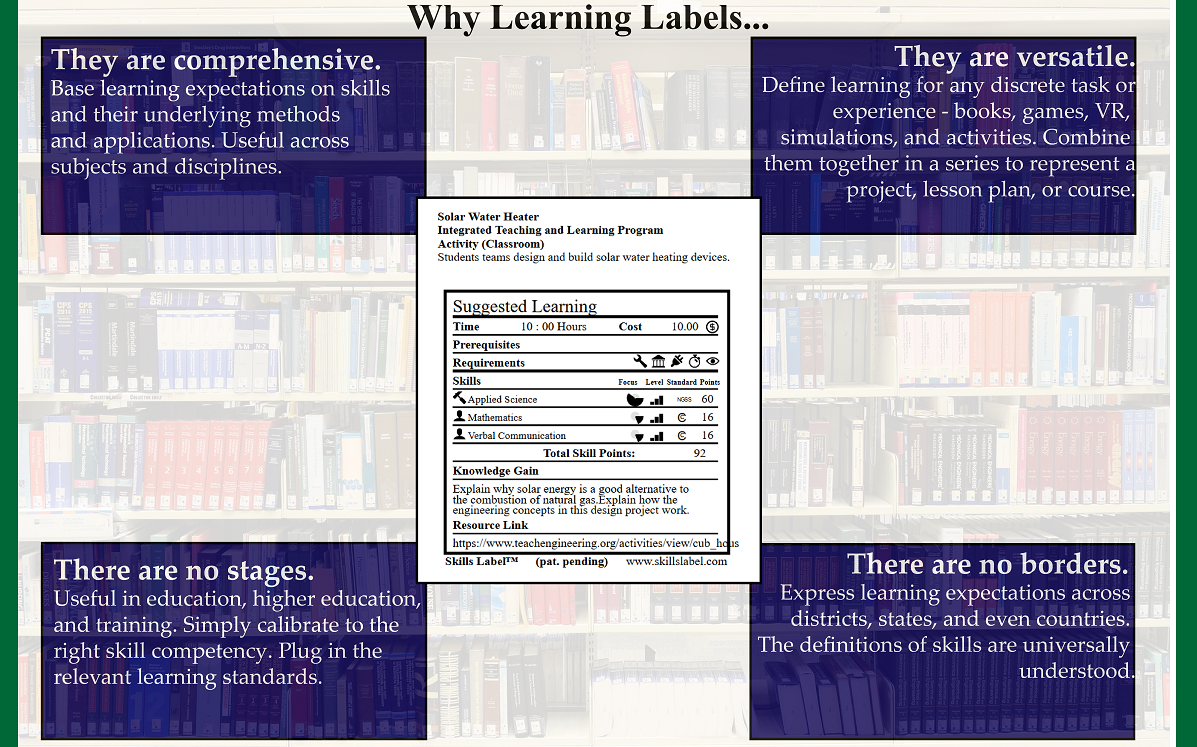When you create an original concept, you think how it solves a specific problem – on a micro level. But later, as it gains momentum, you start to see how it solves bigger problems – on a macro level. The idea of learning labels is intriguing.
The genesis idea of learning labels was based on trying to reduce the amount of typing in a tasking application (Skills Based Approach). But the learning labels solve a bigger problem. There is not a standardized display (representation) of learning expectations. (For a point of reference, examples of standardized displays include a nutritional label for food or resume for professional evaluations.) There is no basis of comparison between traditional and emerging learning resources. Over the past couple of years, I realized these learning labels have even more potential.
There are no borders. It is possible to express the learning expectations across districts, states, and even countries. Substitute different languages to express the textual content if necessary. The icons are generally accepted across cultures. The definitions of skills are universally understood. Imagine distributing learning labels as a cross culture exchange of learning resources and their expectations.
There are no stages. The learning labels can be used in education, higher education, and training. Simply calibrate to the right skill competency. Plug in the relevant learning standards. Bridge these highly fragmented, disjointed systems with a uniform representation of learning expectations.
They are comprehensive. Basing the learning expectations on skills and their underlying methods and applications, makes them useful across subjects and disciplines. Skills include foundational thinking (and their methods) and soft skills. Track the development of all learning in and out of the classroom.
They are versatile. It is possible to define learning for any discrete task or experience – books, games, VR, simulations, and activities. Combine them together in a series to represent a project, lesson plan, or course. There is new personalized grading functionality, so a learner automatically navigates through a series. Give learners the opportunity to choose how and what they are learning.
They are a basis for accountability. Institutions verify the learning expectations are accurate on the labels – like the FDA puts a stamp of approval on a nutritional label. In education, this might be similar to an accreditation process of a course. To speed up the process, a technology like blockchain might be an answer where everyone shares a ledger.
Skills Label is a patent pending to express learning expectations in a uniform way. The service is currently free.
